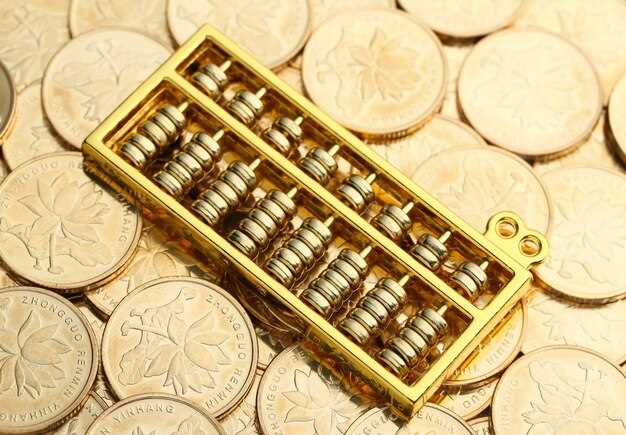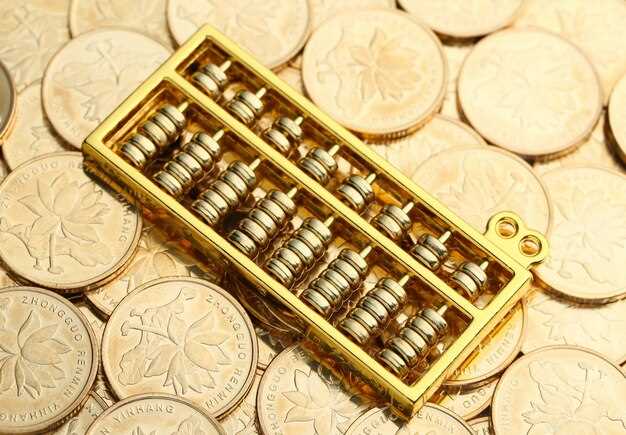Allocate your investments wisely by considering the upcoming forecast for gold prices from 2025 to 2030. Analysts recommend diversifying portfolios with gold due to its potential to offer substantial returns in the coming decade. This precious metal, known for its stability in times of economic uncertainty, is projected to see notable growth based on current market analyses.
Professionals in the field project that inflationary pressures and economic shifts will significantly influence gold prices in the coming years. The anticipated increase in demand from emerging markets, particularly in regions experiencing rapid economic expansion, plays a crucial role in shaping these price forecasts. As a result, investors should pay close attention to economic indicators and geopolitical climates influencing these regions.
Current data suggests that policy changes in key global economies may lead to increased volatility in currencies, which historically drives investors towards gold as a safe haven. Analysts suggest maintaining a keen eye on central banks’ monetary policies worldwide, as these are likely to impact gold’s appeal and, consequently, its market price. Understanding these dynamics will equip investors with the insights necessary to optimize their investment strategies efficiently.
Factors Influencing Gold Prices in 2025–2030

Pay attention to geopolitical tensions, which significantly impact gold prices. Conflicts or trade disputes increase demand for safe-haven assets like gold. Monitor regions with ongoing or potential conflicts, as these can surge prices rapidly.
Consider the global economic growth rate. If economies struggle, central banks often lower interest rates, making gold more attractive due to lower opportunity costs. Track major economies’ GDP for insights into potential gold price rises.
Inflation trends play a pivotal role. Higher inflation rates decrease currency value, encouraging investment in gold as a hedge. Analyze inflation forecasts, especially in countries with significant gold consumption, such as India and China.
Government policies and central bank activities are crucial. Watch for policies regarding gold reserves, as large purchases or sales by central banks can sway prices. Assess policy changes in key economies to anticipate market shifts.
Investigate currency fluctuations, particularly the US dollar. Gold usually has an inverse relationship with the dollar; thus, a weaker dollar often boosts gold prices. Keep updated on forex markets to predict possible gold price movements.
Technological advancements in mining could influence supply levels. Advancements may lower production costs, affecting gold supply and price. Stay informed about mining innovations to understand their impact on supply dynamics.
Environmental regulations and social governance also matter. Stricter environmental laws can lead to increased mining costs, impacting supply and price. Support for sustainable and ethically sourced gold could shape market demand trends.
Impact of Global Economic Trends
Maximize opportunities with gold investments by closely monitoring global economic trends. For instance, inflation rates in major economies like the United States and Eurozone directly influence gold prices. A surge in inflation typically boosts gold’s appeal as a hedge, pushing its price upward. Therefore, track central banks’ monetary policies, as adjustments can signal upcoming shifts in inflation.
Observe geopolitical tensions and trade policies closely. Events causing uncertainty often lead to increased gold demand due to its nature as a safe haven asset. Analyze trade agreements and disputes, such as ongoing U.S.-China relations, to anticipate market reactions. Additionally, consider currency fluctuations, especially the U.S. dollar, as a weaker dollar usually leads to higher gold prices due to cheaper purchasing costs for other currencies.
Examine economic indicators like GDP growth rates, employment data, and consumer confidence indices. Strong economic growth might decrease gold’s demand, as higher returns from stocks and bonds divert interest away from gold. Conversely, a downturn could enhance gold’s attractiveness. Stay informed with reliable economic forecasts and data from credible institutions to make informed decisions.
| Trend | Influence on Gold Price |
|---|---|
| High Inflation | Increases demand, raising prices |
| Geopolitical Tensions | Boosts gold as a safe haven |
| Strong GDP Growth | Potentially decreases demand |
| Weak U.S. Dollar | Makes gold cheaper globally, increasing demand |
Integrate these insights into your investment strategy to optimize outcomes. By staying agile and informed on these economic trends, you can fortify your portfolio against potential market volatility.
Monetary Policies and Interest Rates
Adjust interest allocations as central banks wield significant influence over gold prices through their monetary policies and interest rate strategies. Predict a shift: if central banks lean towards dovish policies, expect gold to shine due to lower interest rates, which reduce the opportunity cost of holding non-yielding assets like gold. Conversely, hawkish stances could dampen gold’s allure as rising rates make yield-bearing investments more attractive.
Track policy shifts closely. In 2025, monitor the Federal Reserve’s policy changes and similar actions by the European Central Bank and the People’s Bank of China. They signal trends that may increase or decrease demand for gold. For instance, if inflation persists beyond targets in major economies, gold could serve as a hedge, prompting higher demand and potentially driving prices up.
Anticipate scenarios with global interest rate changes largely influencing investor sentiment. Historical data shows that periods of low real interest rates often correlate with bullish gold markets. For portfolio diversification, maintain a mix of assets, including gold, to mitigate interest rate volatility risks. Consider these strategies when projecting gold prices, ensuring a balance between risk management and capital growth.
Geopolitical Events and Their Consequences
Anticipate a direct impact on gold prices from geopolitical tensions. Events like trade wars, military conflicts, and diplomatic standoffs often lead to increased demand for gold as a safe-haven asset. Investors should monitor specific situations closely for better prediction of gold price trends.
- Russia-Ukraine Conflict: This ongoing situation may cause volatility in the commodities market, with potential disruptions in metal supplies. Monitor any escalation, as it could spike gold prices due to increased uncertainty.
- US-China Relations: Trade negotiations and tariffs between these two economic giants impact global trade policies, influencing gold markets. A trade breakdown could increase demand for gold, while a resolution might stabilize prices.
- Middle East Tensions: With several geopolitical hotspots in the region, sudden escalations can drive investors towards gold. Pay attention to developments in areas like Iran, which may affect oil prices and, subsequently, gold demand.
- Political Policy Shifts: Changes in monetary policy, especially in major economies like the US or the European Union, directly affect gold prices. Keep an eye on interest rate decisions and quantitative easing measures.
- Economic Sanctions: Imposed on countries with geopolitical tensions, sanctions can lead to economic instability, fostering an environment favorable for gold investment.
Investors should leverage these insights to anticipate market movements and make informed decisions regarding gold investments. Staying informed and agile is key to navigating the impact of geopolitical events on gold prices.
Technological Advances in Gold Mining
Embrace 3D modeling to accurately assess potential mining sites and reduce exploration costs. These detailed models help identify gold deposits with exceptional precision, ensuring efficient allocation of resources. Incorporate automated equipment to enhance safety and productivity. Drones monitor vast mining areas, offering real-time data and reducing the need for manual inspections. Integrate advanced data analytics with historical data to pinpoint promising locations, refine exploration tactics, and optimize production forecasts. Leverage the potential of blockchain technology to ensure transparency and traceability in the supply chain, building trust with stakeholders and consumers.
Invest in sustainable mining methods to minimize environmental impacts. Adopting hydrometallurgy not only improves gold recovery rates but also reduces waste. Smart water management systems recycle water to preserve this vital resource. Explore energy-efficient technologies such as solar power to decrease reliance on fossil fuels, cutting operational costs and aligning with global sustainability standards.
Collaborations between mining companies and tech providers drive innovation. Establish partnerships with tech firms to access cutting-edge solutions, while participating in industry forums to stay informed about the latest technological trends. Continuous improvement strategies should prioritize research and development, ensuring long-term competitiveness in the gold mining sector.
Analysts’ Predictions for Gold Price Movement

Experts suggest that the price of gold could rise sharply by 2025, primarily due to increased global economic uncertainty and inflation pressures. Many analysts predict a continued demand for safe-haven assets like gold, with some estimating prices to reach up to $2,500 per ounce within the next two years.
Key factors influencing these predictions include:
- Inflation Trends: Analysts forecast that ongoing inflationary trends could push investors toward gold, seeing it as a reliable store of value during economic instability.
- Geopolitical Tensions: Heightened global tensions, particularly in areas affecting major economies, are likely to bolster gold demand, with experts closely monitoring potential hotspots that could impact economic stability.
- Currency Fluctuations: A potential weakening of major currencies, such as the US dollar, might lead investors to seek gold as a hedge, thereby increasing its price.
- Central Bank Policies: Several analysts highlight that central banks may continue their gold-buying spree as part of diversifying reserves, contributing to price increases.
From 2026 to 2030, projections remain optimistic, with analysts emphasizing the role of technological advances in mining and renewed interest in sustainable investing. They anticipate that rising production technology could mitigate supply constraints, helping stabilize prices.
Finally, continuous adaptation of gold as a central component in technology, especially in electronics and renewable energy solutions, might further drive its valuation upwards. Analysts remain cautiously optimistic, urging investors to stay informed about economic indicators and geopolitical developments that may influence gold’s trajectory.
Short-term vs. Long-term Expectations
Focus on immediate market movements by monitoring geopolitical tensions, inflation rates, and currency fluctuations. Analysts predict that gold prices might experience volatility over the next few months as global markets react to economic news.
- Geopolitical tensions: Political instability can prompt investors to turn to gold as a safe haven, potentially raising prices.
- Inflation rates: Higher inflation may drive individuals and institutions to protect wealth by investing in gold, lifting short-term demand.
- Currency strength: A weakening dollar often boosts gold prices, as it becomes cheaper for holders of other currencies to purchase.
For long-term projections, consider macroeconomic trends like technological advancements, central bank policies, and sustainability considerations in mining. Expectations for the 2025–2030 period suggest a steady increase in gold’s value:
- Technological advancements: Innovations in mining technology could reduce costs, influencing supply and potentially moderating price increases.
- Central bank policies: As central banks adjust reserves and interest rates worldwide, their decisions could significantly impact gold’s long-term appeal and valuation.
- Sustainability: Environmental considerations may impact mining processes, possibly affecting supply and pushing prices up in response to constrained production.
Adapting strategies to both timeframes can harness gold’s potential as both a short-term hedge and a long-term investment. Tailor your portfolio to balance these dynamics effectively.
Historical Patterns and Future Predictions
Analysts recommend considering historical gold price trends as a key component of future projections. Historically, gold has served as a hedge against inflation, soaring during periods of economic uncertainty. For example, the price surged dramatically during the 1970s when inflation rates were high. In 2008, amidst the financial crisis, gold peaked due to increased demand for safe-haven assets.
Looking ahead to 2025–2030, analysts predict gold prices will benefit from ongoing geopolitical tensions and economic volatility. The rise in interest rates may initially suppress gold prices, but with central banks likely to offer easing measures eventually, gold can regain its luster. Additionally, growing global debt levels are expected to contribute to an upward trend as investors seek stability in gold.
Consider the role of emerging markets in determining future gold demand. Nations such as China and India have seen significant increases in gold consumption reflecting economic growth and cultural affinity for gold. Analysts expect this demand to continue rising as these economies expand, further influencing global prices positively.
Environmental and sustainability considerations also play a part in shaping future gold supply, as tighter regulations on mining could restrict production. Consequently, reduced supply alongside rising demand may lead to higher prices.
By focusing on these historical and future indicators, one can gain valuable insights into possible gold price movements, positioning themselves strategically in their investment endeavors.
Investment Strategies for Different Scenarios
For a Bull Market: When gold prices surge, focus on equities from mining companies. They often outperform gold itself due to increased profits and improved operational efficiencies. Diversify across major and junior miners to balance risk and potential returns. Consider investing in ETFs that track the performance of gold mining companies to streamline your portfolio.
In a Bear Market: Prioritize preservation of capital through gold-backed stable assets. Allocate a larger portion of your portfolio to physical gold or gold ETFs which offer liquidity without compromising on safety. Protect against market volatility by trimming positions in speculative mining stocks and reallocating funds into more stable investments.
During Inflationary Periods: Utilize gold as an inflation hedge. Gradually increase your holdings in gold futures or options, which provide leverage and greater exposure to price increases. Examine gold-related bonds that pay interest yet are influenced by gold prices for additional yield.
For Economic Uncertainty: Focus on quality diversification. Combine physical gold with international gold funds to provide a safety net and currency diversification. Investigate gold-related REITs for exposure to both gold’s defensive qualities and real estate’s income potential.
Stable Economic Growth: Blend gold investments with other asset classes. Allocate a modest portion of your portfolio to gold to balance the risk and reward of equities and bonds. Use dollar-cost averaging to build your position over time without being swayed by short-term price swings.
Effective strategy hinges on understanding your goals and risk tolerance. Match investment choices with these factors to optimize outcomes across varying economic conditions.
Potential Risks and Mitigation Tactics
Consider diversifying your investment portfolio across different asset classes to mitigate risks associated with gold price volatility. History shows that inflation and geopolitical tensions often drive gold prices upward. However, oversupply or decreased demand from major markets like China and India can pull prices down. To counter these dynamics, maintain a balanced portfolio incorporating equities, bonds, and alternative investments alongside gold.
Political instability and regulatory changes present additional risks. Stay updated on international trade agreements and mining regulations by following reputable news sources and market analyses. Leverage hedging strategies, such as futures contracts or options, to manage exposure to adverse price movements. For instance, purchasing put options can protect against potential price declines.
Interest rate fluctuations also significantly impact gold prices. As interest rates rise, non-yielding assets like gold become less attractive. Monitor central bank policies and adjust asset allocations accordingly. Inflation-linked bonds can serve as a hedge against rising rates affecting gold’s appeal.
Review liquidity preferences and risk appetite regularly to ensure alignment with evolving market conditions. Consider consulting with financial advisors to create personalized strategies. Below is a summary of significant risks and corresponding tactics:
| Risk | Mitigation Tactic |
|---|---|
| Volatility in Gold Prices | Diversify Portfolio |
| Geopolitical Tensions | Stay Informed, Use Hedging Instruments |
| Regulatory Changes | Monitor Legal Updates |
| Interest Rate Fluctuations | Adjust Asset Allocations |
Being proactive with these strategies helps safeguard investments, ensuring resilience against unforeseen economic shifts. Prioritize continuous learning and informed decision-making to navigate the complexities of the gold market efficiently.
Q&A:
What factors are likely to influence the gold price between 2025 and 2030?
Several factors can influence gold prices in the period between 2025 and 2030. Economic indicators such as inflation rates, interest rates, and currency fluctuations play a major role. Geopolitical tensions and trade policies can also impact gold prices, as gold is often seen as a safe-haven investment during times of uncertainty. Additionally, changes in technology and the mining industry may affect supply and demand dynamics, influencing the price of gold.
How accurate are the predictions for gold prices up to 2030?
Predicting exact prices for gold in the long term is inherently difficult due to the complexity and interaction of various factors affecting the market. Analysts use historical data, economic trends, and models to make educated estimates, yet unforeseen global events or shifts in the economy can lead to significant deviations from these predictions. Therefore, while predictions can provide a general direction, they should be interpreted with caution.
Why do analysts have differing opinions on gold’s future price?
Analysts may have differing views on gold’s future price due to the uncertain nature of economic and geopolitical factors. Each analyst may weigh these factors differently based on their research, experience, and methodology. Some may prioritize economic indicators while others might focus on geopolitical tensions or technological advances. Varied assumptions and risk assessments lead to diverse predictions and recommendations.
Could potential changes in global trade policies affect gold prices in the coming years?
Changes in global trade policies can significantly impact gold prices. Trade restrictions or tariffs can lead to economic instability or changes in currency value, both of which can drive investors to seek the security of gold. If global trade policies become more protective, this could lead to heightened market volatility and influence demand for gold as a safe-haven asset. Conversely, improved trade relations may have a stabilizing effect.
Is there a consensus among analysts about the trend of gold prices towards 2030?
There is typically no single consensus among analysts regarding the trend of gold prices through 2030 due to differing perspectives on influencing factors. While some analysts anticipate a rise due to economic instability and inflation concerns, others predict stabilization or decline if global economies recover more robustly than expected. The diversity of opinions highlights the challenges in forecasting such a complex and multifactorial commodity market.
What are the main factors influencing the gold price forecast for 2025–2030?
The gold price forecast for the years 2025 to 2030 is shaped by multiple factors. Firstly, global economic stability plays a critical role; economic uncertainty often drives investors toward gold as a safe-haven asset. Additionally, interest rates set by central banks can significantly impact gold prices, as higher rates generally reduce the appeal of gold, which does not yield interest. Inflation trends also contribute to the gold price fluctuations, with higher inflation potentially increasing demand for gold as a store of value. Lastly, geopolitical tensions and changes in currency strength, especially the US dollar, are important in determining the long-term trends in gold pricing.



